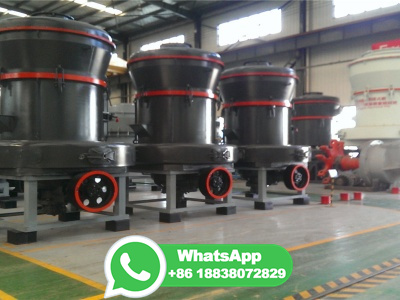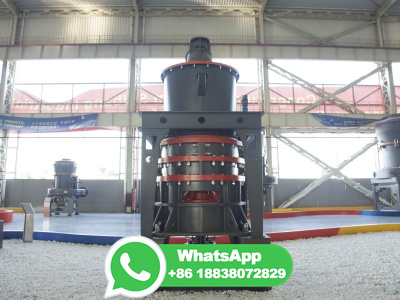
Mar 07, 2019 · This cone has two distinct types of edges: hard and soft. The soft edge can be found in the curve of the shadow on the rounded surface of the cone. Hard edges are created were the cone overlaps the background and touches the table. Keep Learning. Now that you have the basics of graphite pencil covered, start practicing!
Get Price
Enter Top Width, Bottom Width and Height of the cone (see diagram) and hit Calculate to draw a full scale printable pattern template to mark out the cone. To mark holes or lines around the cone, check Holes or Lines and enter number of hole Slant Height up slanting edge of the cone and Hole Diameter and hit Draw.
Get Price
Graphite sheets provide the characteristic advantages, such as flexibility, compactability, resilience and easy forming into various shapes, in addition to the intrinsic properties of graphite,, lubricity, chemical and thermal stability, high electrical and thermal conductivities, etc. Based on these properties, they have been widely used ...
Get Price
Sand casting involves four basic steps: assemble the sand mold, pour liquid metal into the mold, allow the metal to cool, then break away the sand and remove the casting. Of course, the process is more complex than it sounds. The first step of mold .
Get Price
Answer (1 of 2): Yes, they do get dull eventually. You throw them away and buy a new pencil sharpener. Sharpening a cylindrical cutter will reduce the diameter and make it impossible for them to mesh into a complete cone. If you want to try it, you will need some kind of turning equipment like a ...
Get Price
Step 1. Mix up your graphite clay. There is no specific recipe for creating graphite clay for crucibles because all crucibles are used for melting different metals. You will have to come up with your own mixture of graphite, silicon carbide, silicon material, glass and aluminosilies. For a basic crucible, you will require 30 to 50 percent ...
Get Price
The floating of graphite and abnormal shape of graphite in the center is a kind of metallographic structure defect associated with shrinkage cavity and porosity tendency, which is very difficult to avoid in heavy section ductile iron order to avoid shrinkage cavity and porosity, the carbon equivalent CE will be increased.
Get Price
The cone – the section that is cone shaped (surprise surprise). It channels the dust down through the dust chute (on the end of the cone) and into the collection chamber. The air inlet and ramp – the inlet brings in the dust filled air, the air ramp reduces turbulence by directing that air downwards into the desired spiral.
Get Price
The sand casting process involves the use of a furnace, metal, pattern, and sand mold. The metal is melted in the furnace and then ladled and poured into the cavity of the sand mold, which is formed by the pattern. The sand mold separates along a parting line and the solidified casting can be removed.
Get Price
The mixing ratio between the clay and graphite during lead production determines the hardness grade of a pencil lead. ... the triangular shape is recommended for writing novices. Because the triangular pencil ends in a round cone shape at the front, it can be sharpened easily with a normal sharpener. ... If the pencils are dipped into water ...
Get Price
For the determination of Nb, Ta, Ti, and Zr the test sample was mixed with carbon powder (1: 1) and introduced into a carbon electrode (E) with a pointed portion mm inmore » The exposure time was 23 min with 15 sec of preliminary sparking with a current.
Get Price
I have a small mulch bed (very little mulchthe rest is sandy underneath), and I notice these little (2" diameter max) cone shaped burrows in the ground. They look like upside down ant hills. I've tried scooping in and around them, but have found nothing! I get rid of them one night and all new ones are there the next morning.
Get Price
CS Series cone crushers (2ft, 3ft, 4 1/4ft, 5 1/2 feet standard and short head cone crusher) with capacity 50400, tph are used for quarry, mining, sand making industry. If you need any graphite crushing equipments, or graphite crushing line design, please contact us.
Get Price
You will need a mold to pour your melted material into in order to create a loaf, bar, coin, or ingot. We carry molds in a variety of materials including graphite, cast iron, and steel. Graphite. Graphite is an ideal material for metal casting as it can withstand extremely high temperatures.
Get Price
natural underground void large enough for a human to enter. 5. a deposit of windblown sand that forms when wind meets an obstacle. 3. a part of the shore that sticks out into the ocean; it's made of harder rock that resists erosion by waves. 6. a feature of wave erosion that forms when waves erode a layer of softer rock that underlies a ...
Get Price
Fill the cone up to the brim with sand once, and empty it into the cylinder. We find that it fills up only a part of the cylinder [see Fig. (a)]. When we fill up the cone again to the brim, and empty it into the cylinder, we see that the cylinder is still not full [see Fig. (b)].
Get Price
Oct 31, 2014 · Cinder cone s, sometimes called scoria cone s or pyroclastic cone s, are the most common types of volcanic cones. They form after violent eruptions blow lava fragments into the air, which then solidify and fall as cinder s around the volcanic vent.
Get Price
Feb 05, 2020 · The effect of Bi level on the macro and microstructure of thickwalled highsilicon ductile iron castings has been investigated, as well as the influence of chunky graphite on the mechanical properties. Influence of cooling rate on graphite morphology was also investigated. High silicon level has caused the formation of chunky graphite, in very high amounts, along .
Get Price
Dec 17, 2011 · Expert insights into important topics in the field ... Some inherently possess a low coefficient because of the nature of the raw material. Graphite is one example of a material with inherent low friction characteristics. In general, PTFE has the lowest friction coefficient, with graphite not far behind. ... Coneshaped molded packing made of ...
Get Price
Blowing a Viking horn is a simple process of using the instrument's natural shape to create a unique booming buzz sound. Viking horns are made from a single piece of cow horn and do not often require reeds or other mouthpieces unless the natural mouthpiece is extremely thin. Producing sound through a Viking horn ...
Get Price